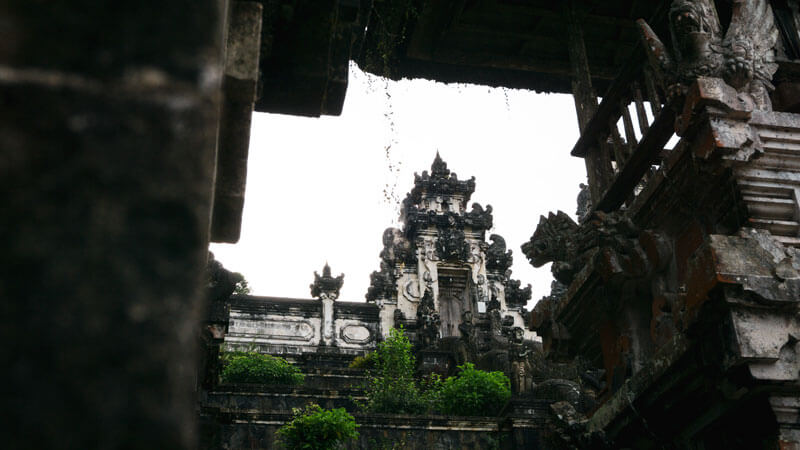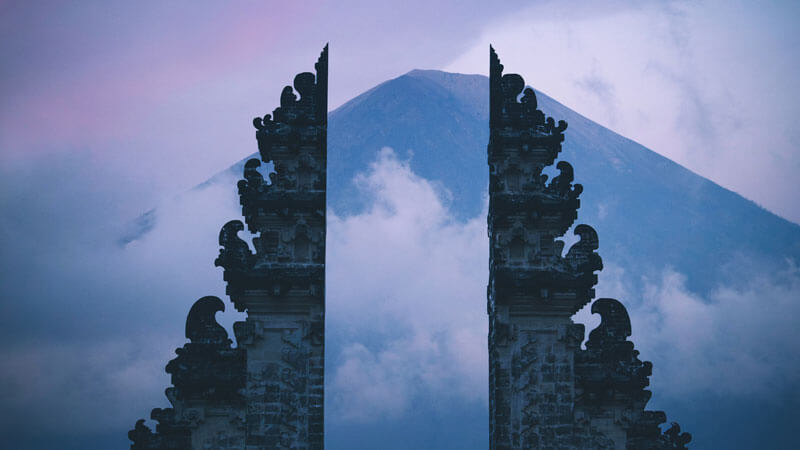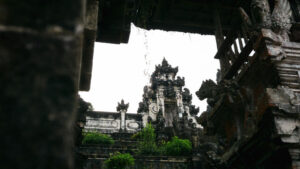Firstly, today, we delve into the historical narrative of Lempuyang Temple, an outstanding spiritual retreat for Bali travelers. To clarify, this discussion will provide comprehensive insights into the temple’s past, myths, and the profound influence of this Hindu sanctuary on the Balinese community. Nestled atop Bisbis Hill in Karangasem, East Bali, Lempuyang Temple history is a tapestry of Balinese spirituality and mythology. The temple is not simply a spiritual landmark but a critical part of the Balinese Hindu society’s spiritual life.
Bahasa Indonesia, Sejarah Pura Lempuyang.

Table of Contents[Hide][Show]
- The Legend and Lempuyang Temple History: The Genesis
- The Role of Lempuyang Temple in Balinese Spirituality
- Penataran Agung: Glimpsing the ‘Heaven’s Gate Beauty
- A Living Testament to Balinese Culture and Traditions
- Lempuyang Temple: A Monument to Bali’s Spiritual Legacy
- Lempuyang Luhur Temple: The Mesmerizing View from the Summit
- Conclusion: Valuing the Historical Legacy and Architectural Brilliance of Lempuyang Temple
The Legend and Lempuyang Temple History: The Genesis
Above all, the legends of Lempuyang Temple deeply root its intriguing tale of the establishment. For instance, three ancient Balinese manuscripts, the ‘Babad Pasek,’ ‘Lontar Kutara Kanda Dewapurana Bangsul,’ and ‘Sading Village Inscription,’ intertwine the temple’s historical heritage with the legend of Bhatara Tiga’s arrival in Bali, as Bhatara Pacupati commanded.
As a result, Bhatara Gnijaya, from the Bhatara Tiga, was chosen to glorify a sacred place on Mount Lempuyang, present-day Bisbis Hill. You can discover more about the fascinating legend surrounding the establishment of Lempuyang Luhur Temple by following this link.
The Role of Lempuyang Temple in Balinese Spirituality
Above all, Lempuyang Temple holds a paramount role in Balinese spirituality. It is part of the Sad Kahyangan: Bali’s Six Spiritual Pillars, the Island of the Gods’ primary holy sites. Moreover, Hyang Iswara, representing the East, has the temple’s dedication, serving as a spiritual bulwark that protects the Island from evil forces.
In addition to the Lempuyang Temple, I’ve written extensively about the history of Tanah Lot Temple. Please click the link for a deeper exploration.
Penataran Agung: Glimpsing the ‘Heaven’s Gate Beauty

Furthermore, Lempuyang Temple’s architecture is a testament to its cultural and historical significance. The temple complex comprises seven sacred sites sprawled across Bisbis Hill. Above all, Penataran Agung has earned renown for its ‘Heaven’s Gate.’ This Bentar Temple gate presents a breathtaking view of Mount Agung.
A Living Testament to Balinese Culture and Traditions
Local communities and the government commit themselves to preserving the history of Lempuyang Temple. This involves maintaining the temple’s structure and conducting rituals, reinforcing this sacred site on Bisbis Hill Karangasem as a living symbol of Balinese traditions.
Lempuyang Temple: A Monument to Bali’s Spiritual Legacy
Lempuyang Temple stands tall as a monument of Bali’s spiritual legacy. The temple, with its rich history and mythology, offers a profound understanding of Balinese Hinduism, local culture, and the spiritual landscape of the Island of the Gods.
For a better thorough exploration of the historical importance of the holy site, you can visit this link, Article about the Temple, on Wikipedia.
Lempuyang Luhur Temple: The Mesmerizing View from the Summit

Lempuyang Luhur Temple, the highest temple within the complex, boasts breathtaking views of Mount Agung and the High Seas. Located around 1,175 meters above sea level, the temple delivers a unique viewpoint of the surroundings.
Reaching Lempuyang Luhur Temple requires ascending around seven hundred steps. Despite the challenge and commitment it demands, the magnificent scenery from the peak offers a truly unforgettable experience, much like the other temples you must visit while vacationing in Bali.
For more on this Eastern Bali temple from travelers’ perspectives, visit Lempuyang Temple on TripAdvisor.
Conclusion: Valuing the Historical Legacy and Architectural Brilliance of Lempuyang Temple
Exploring the roots of a site like Lempuyang Temple reveals the region’s cultural richness and spiritual depth. From its legendary origins to its role as a Sad Kahyangan, the temple embodies Bali’s spiritual heritage through its architecture and symbolism.
The significant role of a Hindu shrine in Karangasem is evident in its continuous efforts to preserve its rich history. This preservation involves keeping the temple’s structure and performing rituals, making this site a vibrant testament to Balinese traditions.
Its legends and tales do not limit the uniqueness of the holy site. Its strategic location, awe-inspiring architecture, and socio-religious role contribute to its singularity. Positioned between the mountains and the sea, the temple imparts invaluable spiritual and cultural understandings to its fortunate visitors.
Hence, the historical significance of Lempuyang Temple, myths, and influence on the Balinese population make it an essential and attractive tourist destination on the Island of the Gods. For comprehensive insights into Bali’s rich cultural heritage, check out “The Ultimate Guide to Bali Cultural Tourism: Explore Iconic Temples and Traditional Villages.”

 The Ultimate Guide to Bali Cultural Tourism: Explore Iconic Temples and Traditional Villages
The Ultimate Guide to Bali Cultural Tourism: Explore Iconic Temples and Traditional Villages